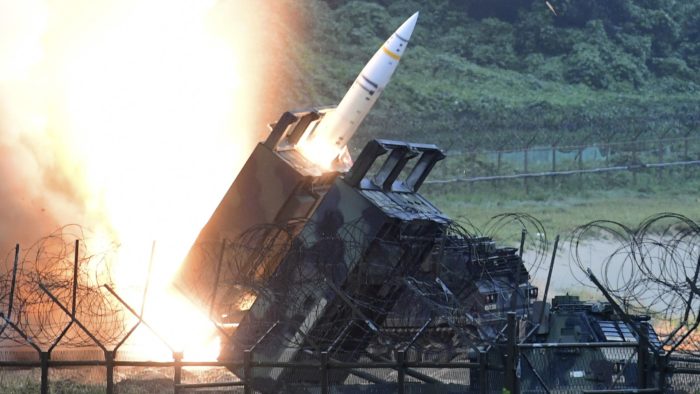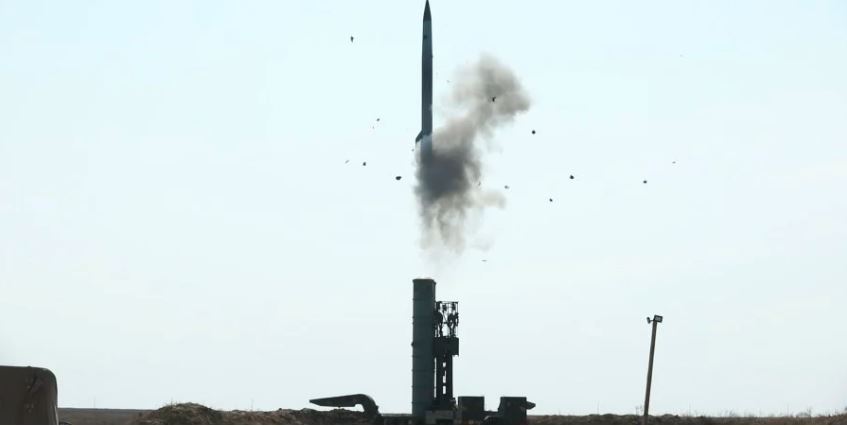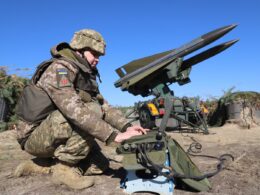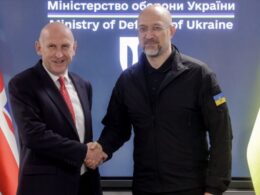After rescinding its nuclear warheads under the pressure of the USA, Ukraine now implores (thus far, without result) the USA to be supplied with 300-km range missiles. However, Ukraine once produced the missiles that terrified the world, and can do it again, says Dr. Oleksandr Marchenko, PhD in physics. He is involved in a team that may soon release its product, but there are many "buts." We talk to Dr. Marchenko to understand why Ukraine's air defense shoots down missiles so successfully, whether Ukraine could create a nuclear bomb, and why the world is so afraid of Russia's missile strikes on Ukraine.
No secrets to cruise missiles

Like many in Ukraine, Oleksandr Marchenko has regrets about Ukraine giving away its nuclear arsenal, the third-largest in the world, in exchange for security guarantees of the 1994 Budapest Memorandum. He disagrees with the notion that Ukraine had no choice but to give away the warheads that many say would have been too costly to maintain. And Ukraine’s last 72 kg of enriched uranium, enough for two nuclear bombs, were given to Russia in 2010 under the pressure of the USA.
“They were our guarantors and they did not fulfill their obligations,” Marchenko sighs bitterly. “Blinken said that if nuclear weapons would be used, they would interfere. But they once said they guarantee our safety... Just imagine.”
If Ukraine was still a nuclear power, Russia would not be destroying Ukraine’s critical infrastructure with its cruise missiles; it would not be waging a war in the first place, he contends.
However, a nuclear bomb, as well as the long-range missiles that Ukraine implores the USA to provide it with are easier to create than the mobile phone I am recording his words on, Marchenko says:
“There is no know-how, no secrets in these cruise missiles. There should just be competent engineering work.”
Ukraine’s constructors from the Pivdenne (Yuzhne in Russian) bureau in Dnipro created the R-36М intercontinental ballistic missiles codenamed “Satan” by NATO. Physicists from the Kyiv Institute of Nuclear Physics and the Institute of Physics and Technology in Kharkiv created multiple location and targeting systems, including the Kolchuga that discovers hundreds of targets at great distances and simultaneously accompanies them.
So, instead of begging for ATACMS, launching its own long-range missile production to hit Russian airfields should have been a breeze for Ukraine. If it weren’t for one problem.
“Now you are asking the USA for missiles. But you trampled on your own physicists during your whole history. You ruined your country, gave it to the oligarchs,” Marchenko speaks of what he says is the Ukrainian government’s attitude to researchers.
“We have people who are involved in developing missile technologies, missiles. Missile seekers were produced in Kyiv and people who made them are still here, but I don't feel that there exists an enormous program to recreate them,” Marchenko complains.
His Institute of Physics has an advanced school of cathode electronics required for radar systems. But his PhD students, who could have been involved in defense programs, either emigrated or entered commercial structures.
“Now we have to ask [for western weapons]. But all this time, our talented youth has been leaving the country. “You need to preserve the school, the staff. Everything depends on the staff. And where is my staff? They went to the West. If we lose the research schools, restoring them will take 30-40 years,” he laments.
Ukraine on track to build its own long-range missiles, “if it will be allowed”
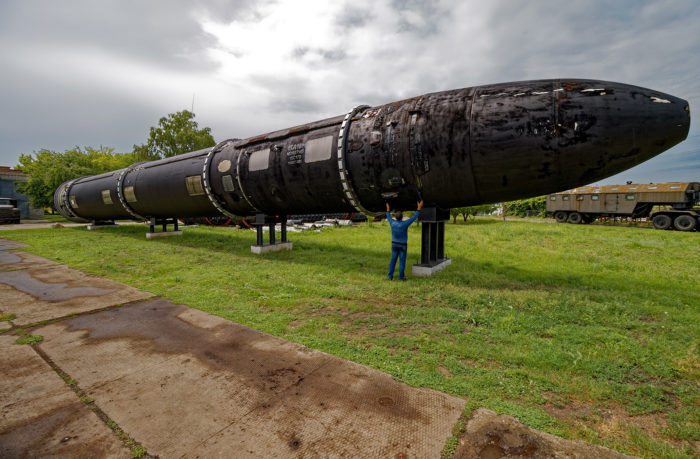
However, work on launching its own long-range missile production is underway in Ukraine despite the difficulties. A team is being cobbled together from specialists remaining at Pivdenmash (Yuzhmash), the factory that created intercontinental ballistic missiles during Soviet times and produced space rockets in Ukraine’s independence years.
“Pivdenmash is the factory that produced the Satan SS20 missile that terrified the world. It flies by a ballistic trajectory, and 10 nuclear warheads fly out of it, to overwhelm air defense. This was all created in Ukraine. And then this Satan was cut up,” Marchenko sighs.
All the “terrifying” ballistic missiles like Satan were produced in Ukraine.
He explains how Ukraine’s missile production started: from Ukrainian-Soviet rocket scientist Korolyov, who built on German missile technology that the Soviets appropriated after WWII: “Without V-1 and V-2 missiles, Gagarin would not have flown into space.” Now, Ukraine produces engines for cruise missiles and is one of four countries to produce large turbine engines for jets.
“Ukraine is lagging behind in some places but there are sectors in which it is doing quite well. Like in helicopter engines. The USSR's collapse was especially painful for Russia because over 200 enterprises in Ukraine were working for Russia's defense sector. They built missile, airplane, helicopter engines. The schools are still here, but suffering from low financing and mismanagement. A cashier in a supermarket earns more than the main engineer of an enterprise,” he chides.
In 1991, when the USSR fell apart, Ukraine’s third-largest world nuclear arsenal had 176 intercontinental ballistic missiles that were transferred to Russia in exchange for security guarantees from the US, Russia, and the UK.
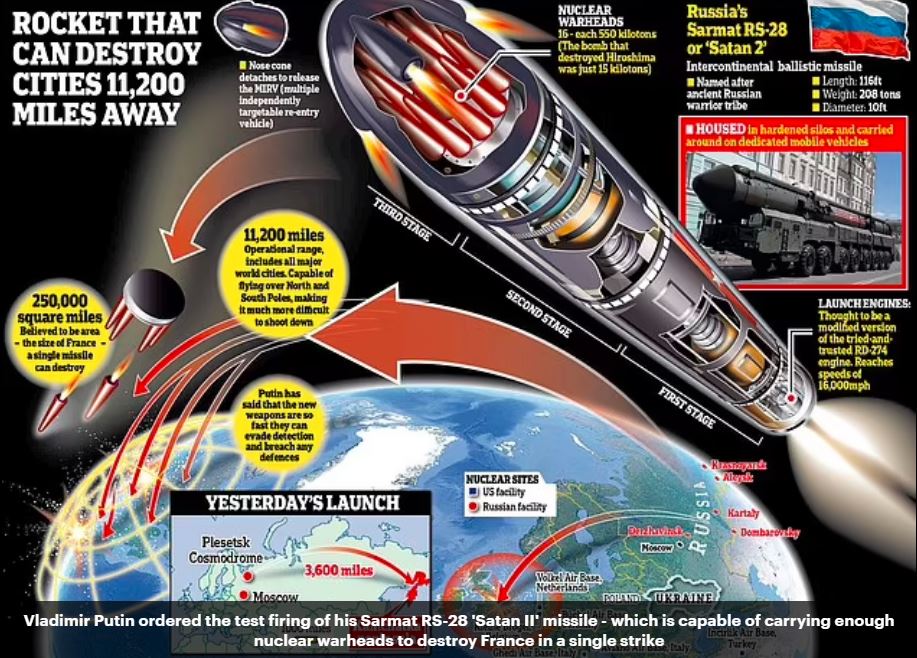
Even now, Ukraine’s engines for cruise missiles are being exported, and Turkish Bayraktar combat drones, used by Ukraine to fight off the Russian invasion, have Ukrainian engines as well, currently produced in Zaporizhzhia.
What would happen if Ukraine could launch its own ballistic missiles?
“It would radically change everything in the war. If we could send a missile on Moscow right now… the Russians will know that they will get a missile strike too and the war will end,” Marchenko dreams.
Ukraine needs long-range missiles to really win the war, country’s top generals say
The range of the missiles that Ukraine can potentially produce can be 1000 km or higher: “Range is a question of diameter.” They can be launched from the earth and jets. Ukraine is dependent on Russia for some components, but replacing them with alternatives on the global market is possible.
“But there is nothing really ‘secret’ in these missiles, just good engineering, the electronics are well-known to all, we produced laser gyroscopes ourselves,” Marchenko stresses. The precision of the gyroscopes is several meters. Russia makes such gyroscopes, too – their precision-guided cruise missiles hit targets in Ukraine’s infrastructure fairly efficiently.
How close is Ukraine to recreating these missiles?
“If it will all be organized, it will be a matter of months.”
And is it being organized?
“There is information that this is happening. I don't think there can be any prohibitions here. Prohibitions can only concern nuclear weapons because the USA is scared of expanding the nuclear club of countries. Even though we are a democratic country, that means we are predictable. In a democratic system, everything can't depend on one idiot. This is why the West is so afraid of totalitarian systems -- China, North Korea.”
A crucial factor in the production of Ukraine’s long and mid-range missiles is testing them. This is an open question for Ukraine, as the country is too small to have a testing ground for a 1000-km missile. During the USSR, Ukraine used the Emba testing area in Kazakhstan and ranges in Russia. For this, Ukraine will also require western support. Marchenko is not aware of any negotiations for long-range missile testing between Ukraine and NATO countries.
“There have to be tests, a commission, then adoption into service. And this has to be aligned with NATO standards. This is not a simple thing, and work is ongoing, and many complexes of Ukrainian production are nearing completion.”
From Marchenko’s words, it appears that Ukraine can start this program – if it will be allowed by its western partners. Currently, the US is not delivering ATACMS missiles with a range of 300 km “because they’re afraid we will bomb Russia.”
However, there exists “a chance that the West will not oppose our development of long-range missiles. We already have Neptune [a Ukrainian anti-ship cruise missile that sunk warship Moskva – ed.]. All it needs is to increase the diameter,” Marchenko reminds.
And if the West does oppose, what will Ukraine do?
“We will have to oblige. If they withdraw military support, it will be the end. We are controlled, weak. But at least let us be controlled by the West, they don't rape our women and children, as opposed to these savage Russians.” But, according to his information, so far “they look at this with understanding.”
Multiple cases of rape and other war crimes have been reported following the liberation of Ukrainian territories from Russian occupation.
No nuclear bomb
The loss of Ukraine’s nuclear status is painful for Marchenko, because it “lost what it had.” However, there are no secrets to nuclear bombs anymore and Ukraine could make one, but it needs time and money, not hundreds of millions but billions of dollars.
Making enriched uranium is very expensive; only a few countries exist that can afford this, as it requires a lot of energy. Ukraine would need at least one nuclear reactor that will work only for this, to run a centrifuge to segregate Uranium 235 from Uranium 238.
“You can only do this by repeatedly running giant centrifuges. There's nothing complicated in this but it needs resources and time.”
Ukraine could technically do this, but it would need to first regain its nuclear status, so it would have a right to nuclear weapons on the international scene. “Maybe our allies will support us in this,” suggests Dr. Marchenko.
Could Ukraine go down the road of creating nuclear weapons despite western resistance? It is possible but will take time and will bring Ukraine’s international isolation.
“It would need tons of money for the enrichment of uranium, several years are needed to create the systems needed. After we gave away our nuclear warheads at the start of the 1990s, we still had 72 kg of enriched Uranium; we gave away the last of our reserves in 2014. If we did not give away that Uranium, we could have divided it into a dozen nuclear warheads and we wouldn't have all these discussions.”
Financial questions aside, Ukraine would not go down this path to not lose the international support that it has in the war. But the physical existence of nukes in Ukraine is not a prerequisite for them to have a deterrent effect, actually – Ukraine’s western partners could simply pretend that Ukraine already has them:
“You don't have to give us nuclear weapons. If the West would create the illusion of Ukraine having missiles that can reach Moscow, or at least announced the transfer of nuclear weapons to Ukraine, Russia would boil a bit but would leave us alone.”
What if Russia sends a nuclear missile into Ukraine, in response to a long-range weapon that is fired back on Russian territory? Marchenko is not afraid:
“I may surprise you, but what do we have to lose? We are being prohibited from living; they want to take away our right to exist as a nation. If they come and rape our women and children -- is this not scarier than a nuclear bomb? Right now, I see that Ukrainians are not afraid because the [Russians] crossed the line between humanity and inhumanity. If I imagine how those animals would torment my close women in this way, a nuclear bomb is no longer scary to me,” he told me in Kyiv.
“The question is whether we be allowed to make a nuclear bomb. We are a controlled country. Imagine we say ‘we are making one’ -- all aid will be withdrawn immediately, and the war will be lost.”
What are cruise missiles
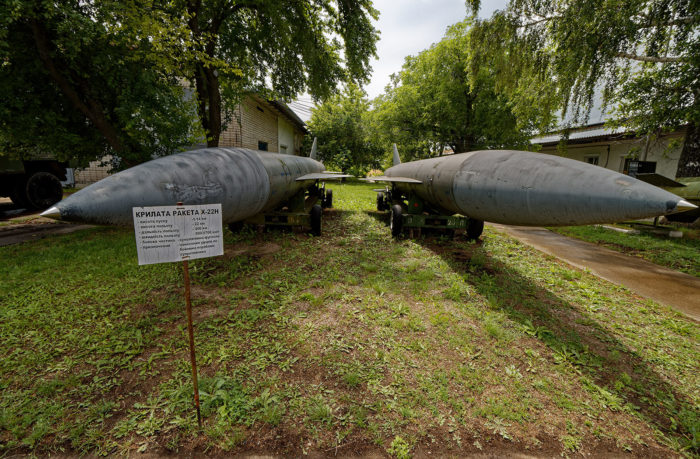
A Moscow-America intercontinental ballistic missile that can travel 10,000 km is carried into the stratosphere, where it flies by a ballistic trajectory and then falls like a rock.
But the cruise missiles with which Russia is destroying Ukraine’s civilian infrastructure (97% hit civilian objects) fly in a different way, at very low altitudes -- 50, 100, 300m -- and rather slowly. They don't need much fuel, are light, small -- only ten meters in length, -- and stealthy: when up in the air, detecting them is difficult, as they emit nothing
They fly via a strictly fixed course, and data on terrain must be programmed in advance for the entire duration of the flight. Their speed is slow because it gives higher chances to avoid all the hills and mountains and allows saving fuel. And their altitudes must be low so the missiles do not enter the zone of radar detection.
The radars have trouble seeing anything below 50-100 m, Dr. Marchenko explains. This peculiarity was exploited by German sports pilot Mathias Rust, who crossed the border with the USSR, flew into Moscow, and landed on the Red Square in 1987. As he flew close to the ground, he was not picked up by Soviet air defense and radars.
https://twitter.com/EuromaidanPress/status/1595407301845852160
When flying, the cruise missile compares its programmed trajectory with what it registers on its way. And if something doesn't add up, it issues a correction signal and keeps flying afterward. And when it approaches its goal, it turns on its radar to correct for the target and becomes visible. But then it's usually too late for air defense: you can't chase it down, and it accelerates, too.
Why Ukraine’s air defense shows such good results in shooting down cruise missiles
How does Ukraine’s air defense shoot down
more than 60% of Russian cruise missiles then – a “very good result”? Sometimes the cruise missiles fly a bit higher and get into the radar discovery zone. Sometimes the radars manage to pick up the missile trajectories at low altitudes. Also of great importance is that the missile launches are registered by US satellites, who then warn Ukraine; without this, Ukraine would shoot down only 20-30% of the missiles, Marchenko says.
Ukraine’s air defense improved fourfold since start of Russian invasion
Then again, Ukraine’s air defense specialists are well-educated, which was confirmed by the Americans. Kyiv’s air defense school, which Marchenko attended, was among the best in the USSR. He was trained rigorously, with laborious examination of the cross-sections of all missiles and extensive field practice at the training ground. And overall, Kyiv once was the center of the electronic industry of the former USSR.
“Ideologically we were no worse than the Americans. But we fell behind forever because the idiot Communists decided not to give money for this development. But still the professionalism of our guys is very high,” Oleksandr Marchenko sums up.
The West is scared of Russian missile attacks on Ukraine, too, he says. When 20 missiles are launched, it's very hard for air defense to shoot down all of them. There have to be 20 missiles launched in response, and each one has to be targeted correctly. There are errors. So, 100% will never be shot down.
“And for instance, if 100 missiles with nuclear warheads are launched at the USA -- they will never shoot down all of them. Some will land; even if five have impact, it's enough.”
To improve the air defense further, Ukraine needs complexes with mid- and long-range missiles that can strike 200-300 km, or even as low as 150 km, and have them placed near strategic objects. This approach was taken already to combat launches of Iranian-made Shahed kamikaze drones: anti-aircraft guns were placed near thermal power plants to shoot them down. Ukraine needs hundreds more mobile complexes, in addition to those that it already has.
As well, personnel needs to be trained -- this is already happening, Marchenko says, but takes time.
“It’s not shooting from a machine gun, and you can’t learn it in a day or a week. People need to know and understand lots of things. This is why the western weapons are being delivered so slowly - there is a bunch of electronics there and people need to be trained.”
Monitoring systems are essential, as well. The American space-tracking system is hyper-important. But apart from it, Ukraine needs more systems with giant antennas to track objects 500-700 km away, and ones for closer targets in other locations.
https://twitter.com/EuromaidanPress/status/1586973250860773377
However, overall, Ukraine’s detection capabilities are higher than average. Elements of the powerful Kolchuga system and derivates to detect and accompany more than a hundred air targets at once are being used to detect the coordinates of Russian missiles. However, it can only detect relatively large targets, which means that a heads-view of a missile will likely be too small to be picked up. And, most importantly, something has to shoot at the detected missiles. To ensure that the targets are hit, Ukraine drastically needs more defense complexes.
Problem of air defense not solved anywhere
Recently, Russia wound down its attacks with Shahed-136 Iranian-made drones. But just several months ago, they regularly caused damage to Ukraine’s infrastructure: Russia launched the cheap loitering munitions in packs, and the costs for Ukraine to shoot them down were estimated to exceed the cost of the attack. Plus, many did hit their targets.
https://twitter.com/EuromaidanPress/status/1582063969367302144
The best way to deal with them is to shoot them down with regular weapons or mini-missiles from planes, as regular missiles are very expensive. Detecting the Shahed-136 drones with radars is difficult. They fly at low and high altitudes, but the signal of their locators is very weak. However, the loud sound of their engines, nicknamed “mopeds” in Ukraine, allows Ukraine’s defenders to shoot them down with MANPADS or guns.
However, there will be no 100% solution for drones:
“They are very effective because if you let out dozens of them, then at least one will hit the target. And they are much cheaper than cruise missiles. They are actually quite effective weapons. This problem is not solved in the world, hence the tension and why everyone is afraid. The anti-missile defense does not work 100%, especially when there is a lot of missiles. It does not work for drones 100% too. But all of this is studied by the Americans and us, and gradually we will learn to shoot them down,” Marchenko assures.
Ukraine’s air defense today consists of air defense missiles launched from stationary and mobile vehicles. The mobile ones are better because they are not detected.
Mostly, they consist of Soviet-made S-300 missiles that can strike hundreds of kilometers away. They can shoot down a supersonic jet, but not a ballistic missile like Kinzhal that flies by a ballistic trajectory, going high up and coming down 6-7 times the speed of sound.
https://twitter.com/EuromaidanPress/status/1584289811073880064
Defense from ballistic missiles is Ukraine’s weak spot: there have been reports that Russia is discussing purchasing ballistic missiles from Iran, although it is not known for sure whether they have been delivered. In October, Russia launched 25 Iskander ballistic missiles at Ukraine. Air defense managed to shoot down only three, Ukraine’s Air Command informed. It could go better with Iranian missiles, but still, Ukraine would be able to shoot down only 15-20%, according to Defense Express expert Oleh Katkov.
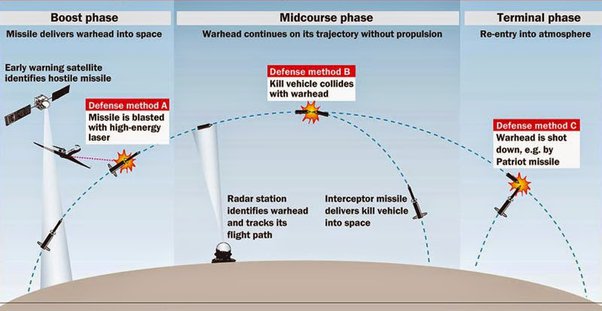
However, Ukraine is virtually defenseless against a Kinzhal. Kinzhal (Kh-47М2) is a supersonic missile launched into the stratosphere from a Mig-31 jet. Russians use multiple launches of these jets to disguise which one is carrying a Kinzhal. After its launch, Ukraine lacks the technical capabilities to track the missile in the stratosphere.
The best chances are to intercept it after launch, but Ukraine lacks the long-range missiles for that. After it goes way up in the stratosphere, it accelerates and enters the atmosphere “with a crazy speed,” and the chances of shooting it down are very low.
“That's why they are called Kinzhal – ‘dagger’ - because there is almost no protection from it. They are very expensive,” Dr. Marchenko explains.
Overall, the chances of shooting down a ballistic missile are best right after the launch, later the chances are much lower, especially if the warhead multiplies. “The problem of air defense is not solved 100% in any country. That's why it's scary and this tension forms. When 100 ballistic missiles fly, dozens will not be shot down,” Marchenko says.
Related:
- Ukraine’s air defense improved fourfold since start of Russian invasion
- 97% of Russian missile attacks target civilian objects – Ukraine’s defense minister
- Terror from the sky: a guide to Russian missiles used against Ukraine and how to stop them
- Ukrainian crowdsourcing app helps destroy its first Russian missile
- More than 30 Western components found in Iranian-made Shahed-136 UAVs – investigation
- Dnipro will not let Ukraine’s space glory be forgotten
- “Unprofessional slander.” Ukrainian rocket experts slam NYT accusations of North Korean leak

